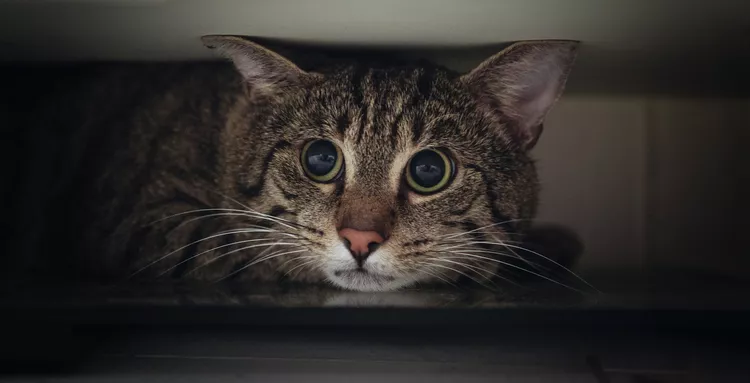When the Thunder Rolls: How I Help Pets Stay Calm During Storm Season
Gold Coast storm season is back. If your pet shakes, hides, or panics when the thunder starts, you’re not alone — and there’s a kind, effective plan we can follow together.

Why Pets Fear Thunderstorms
I’m glad Grace is deaf and can sleep through the worst rumble, but not every pet is that lucky. For many, each clap of thunder feels like the sky is falling. Noise phobia is one of the most common behavioural concerns I see in practice. Sudden flashes, low-frequency booms, and changes in air pressure affect pets far more than us. Dogs and cats hear at higher frequencies and can sense storms long before we do.
- Shaking, pacing, or hiding
- Panting, drooling, or trying to escape
- Destructive behaviour (scratching doors, digging, chewing)
- Clinginess, whining, or vocalising
- Skipping meals or toileting indoors
It’s not just dogs. Cats often internalise fear and may hide for hours or develop stress-related issues like urinary tract inflammation. The important thing: their reaction isn’t “naughty” — it’s anxiety. And we can help.

How I Prepare My Patients Before Storm Season Hits
Here’s the calm plan I talk through with families each spring:
- Create a safe space. Choose a quiet, enclosed area away from windows — a wardrobe, laundry, or bathroom. Add a comfy bed, a familiar blanket, and a favourite toy. White noise or gentle music helps mute the rumble.
- Practice calm. Play storm sounds at a low volume while rewarding relaxed behaviour with treats or praise. Gradually increase the volume over days/weeks (this is called desensitisation).
- Keep your energy steady. Pets read our body language. Breathe, speak softly, and act like nothing unusual is happening.
- Use calming aids early. ThunderShirts, pheromone diffusers (Adaptil/Feliway), and vet-approved calming chews can take the edge off — start before storms.
- Keep a storm routine. Close curtains, turn on TV/fan for white noise, and stay nearby if possible. Avoid leaving severely anxious pets home alone during a storm.
When to Talk to Your Vet
If your pet can’t settle, tries to escape, injures themselves, or drools excessively, don’t wait. Unfortunately, fear compounds with every scary storm — the brain learns: “storm = danger.” Early support prevents worsening anxiety.
I often prescribe short-term calming medication or design a tailored behaviour plan that fits your pet and your lifestyle. These medicines are safe, well-tolerated, and life-changing for pets who otherwise spend summer terrified. We’ll consider how soon your pet reacts before a storm, whether you’re usually home, and if fireworks or travel also trigger them.
🌈 My Tip: Start now. Preparation, calm reassurance, and — when needed — medication make storm season safer and happier for everyone.
Book a Calm ConsultExtra Tools and Techniques to Try
- Record keeping: Note storm dates and your pet’s reactions to fine-tune timing.
- Counter-conditioning: Pair thunder recordings with peanut butter, chicken, or play — so thunder predicts good things.
- Supplements: Some pets respond to L-theanine/tryptophan blends. Ask us what suits your pet.
- Training support: Behaviour trainers experienced with fear can accelerate progress alongside vet care.
FAQs
Can I give human anxiety medication to my pet?
No — many human medications are toxic or have unsafe dosages in animals. Always check with your vet.
What’s the difference between calming chews and prescription medication?
Chews are milder; prescription options work faster and are ideal for severe anxiety.
How early should I give calming medication?
Usually 30–60 minutes before a storm. If forecasts are unpredictable, some pets benefit from daily support during storm season.
My cat hides for hours — is that normal?
Hiding is common, but we can make them more comfortable with pheromones, safe zones, and (if needed) anti-anxiety support.
Do dogs grow out of storm fear?
Most don’t. Fear tends to worsen unless managed early.
Final Thoughts
Storms don’t have to mean chaos. With the right approach, your pet can ride out thunder safely and confidently. If you’re not sure where to start, I’m here to help — let’s build a calm plan together.